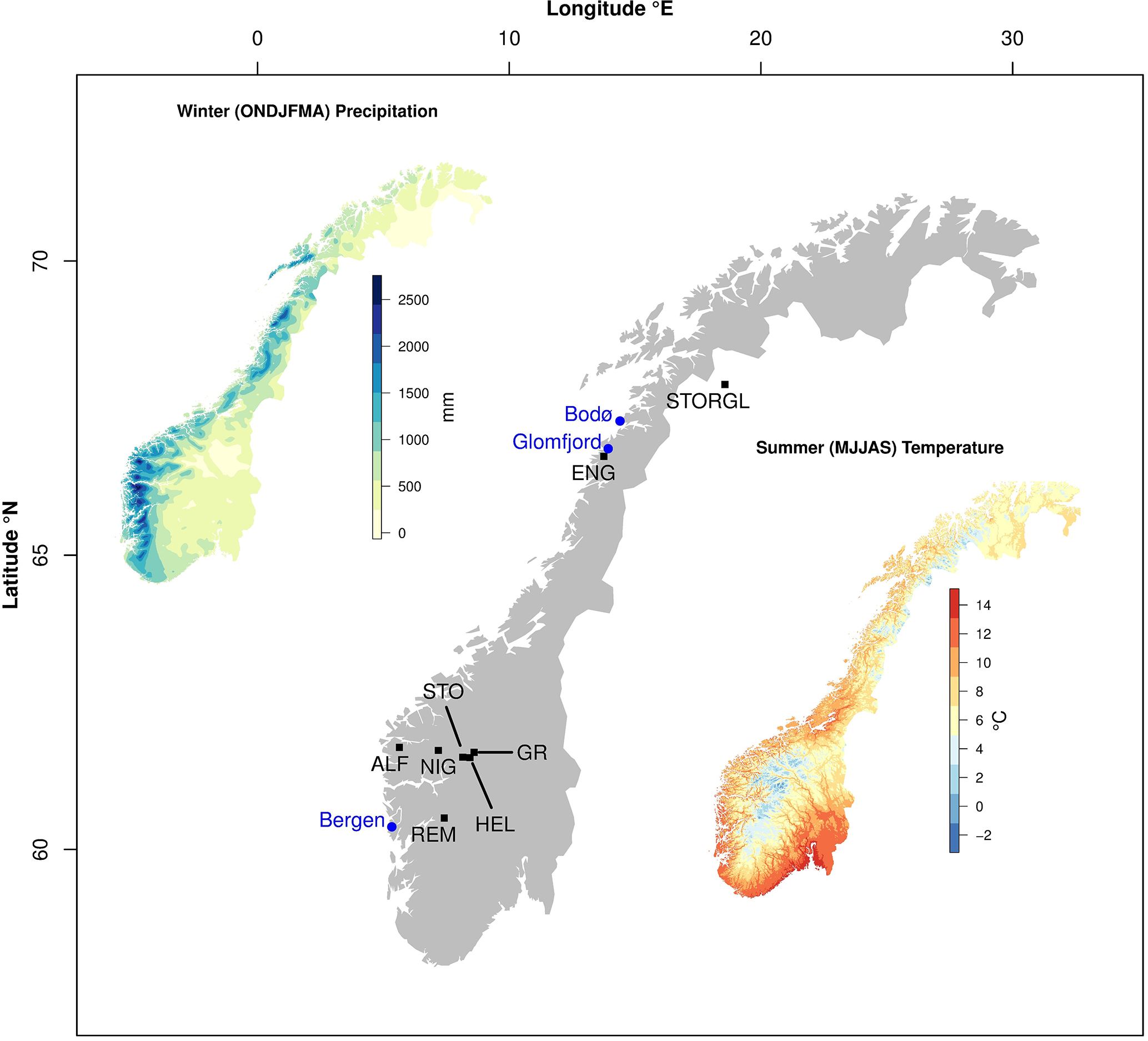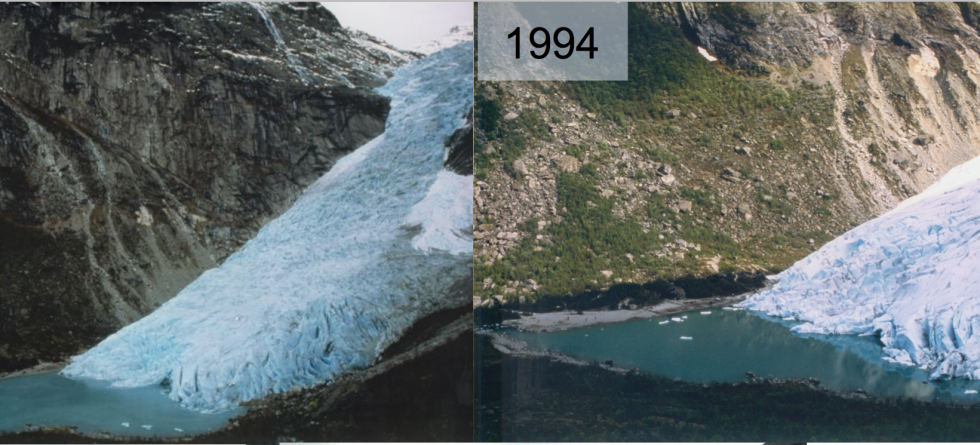The mass balance of glaciers is mainly influenced by winter precipitation and summer temperature. In a recent study, Mathias Trachsel (Dept. of Biology, University of Bergen) and Atle Nesje (Dept. of Earth Science, University of Bergen, Bjerknes Centre for Climate Research and Uni Research Climate) used simple statistical models to assess and quantify the relative importance of summer temperature and winter precipitation for annual mass balances of eight Scandinavian glaciers (for location, see Figure 1)

The study demonstrates that winter precipitation is more important for maritime glaciers, whereas summer temperature is more important for annual balances of continental glaciers.
An important finding is that the relative importance of summer temperature and winter precipitation was not stable through the observation period. Winter precipitation, for example, was more important than summer temperature for the study glaciers in the 25-yr period 1972–1996. The relative importance of summer temperature for the annual mass balance has been increasing towards the present.
The Atlantic Multidecadal Oscillation (AMO) index was consistently negative (cooler than normal summers) between 1963 and 1996 and the North Atlantic Oscillation (NAO) Index was consistently positive (mild and humid winters) between 1987 and 1995, both such weather modes being favourable for glacier growth. Apparently, winter precipitation was more important than summer temperature for annual glacier balance when only considering subsets of years with high NAO index and negative AMO index.
The importance of summer temperature was increased when analysing subsets of years with low NAO index and positive AMO index.
As a result, the relative importance of winter precipitation and summer temperature for glacier mass balance on Scandinavian glaciers was probably influenced by the state of the AMO and the NAO, as these two indices are associated with changes in summer temperature (AMO) and winter precipitation (NAO).
Figure 2 shows that the annual (net) mass balance on the maritime Ålfotbreen in western Norway is strongly associated with the NAO weather mode (NAO index).

Reference

